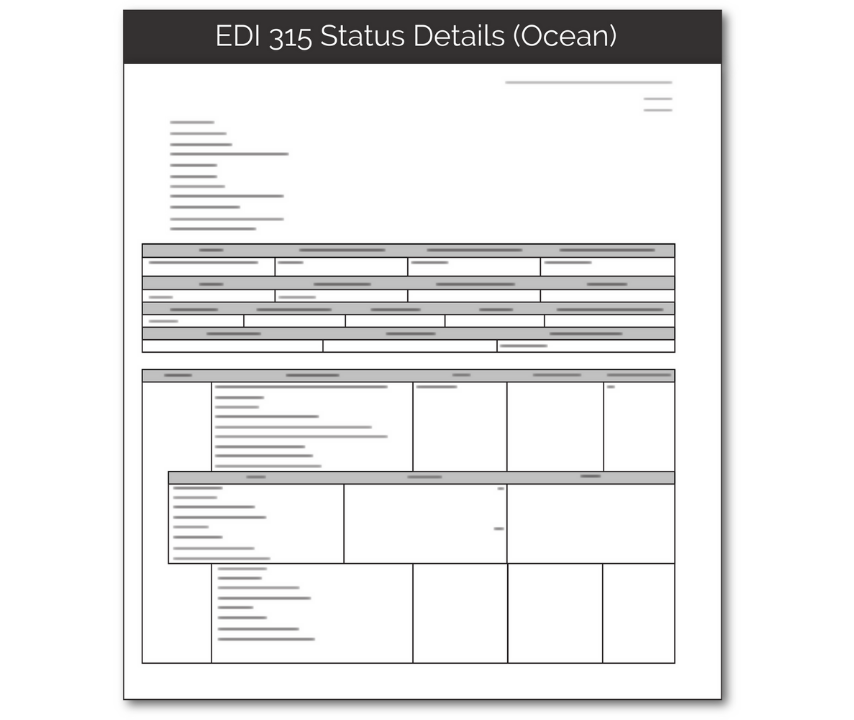EDI 315
Status Details (Ocean)

What is an EDI 315?
EDI 315, also known as a Status Details (Ocean) document, is an EDI transaction set used by ocean carriers to update shippers and receivers about a shipment. This document can inform trading partners about specific events in the shipping cycle and can be used for a single shipment or container.
EDI 315 documents follow the x12 format set by the American National Standards Institute (ANSI), a not-for-profit organization that regulates EDI formats in the U.S.
What are the Essential Components of EDI 315?
Much like the EDI 214 Transportation Carrier Shipment Message, EDI 315 needs to convey specific details regarding a shipment. These include, but are not limited to:
- Purchase order number(s)
- Date and time of shipping event
- Shipper, carrier, and receiver contact information
- Shipment details, such as container weights, dimensions, or shipment status
- Port or terminal information
- Expected delivery date and time
- Indication of shipment changes (such as delivery delays), with a reason for the change


How do I Use EDI 315?
When shipping products overseas, EDI 315 plays an important role in keeping both the shipper and receiver in the loop. Status Details messages are usually triggered by shipping events, such as shipment pickup, arrival at port, or the successful completion of the delivery (offloading). Many trading partners will require EDI 315 to be sent in response to specific events to help them more accurately track their shipments.
Carriers can also use EDI 315 to let their trading partners know about unforeseen events. For example, a storm might slow down an oceanic carrier, causing a delivery delay. EDI 315 can offer status details on a single shipment, or a container, which may include multiple order shipments. However, EDI 315 cannot be used to refer to multiple shipments in different containers, or multiple containers.
After receiving an EDI 315 transaction, retailers will usually send back an EDI 997 Functional Acknowledgement.
What are the Benefits of EDI 315?
First and foremost, using EDI 315 helps shippers and receivers keep track of their shipments, and specifically helps receivers plan for incoming deliveries. Upon receipt of the shipment, the EDI 315 document can be matched with the corresponding EDI 310 Freight Receipt and Invoice (Ocean), allowing the shipper to verify shipment details, before issuing payment to the carrier.
EDI 315 transactions also help shippers evaluate carrier performance. For example, if a certain carrier is consistently delayed, the shipper may consider switching to a new carrier for future shipments. On the flip side, a stand-out carrier can use EDI 315 to show performance consistency and build trust with the shipper.
Buyers also benefit from EDI 315 transactions, which can update them to any events that will change the delivery time and/or date. This helps the receiver plan for their deliveries in advance, and make sure they are ready for the shipment or container when it arrives.
